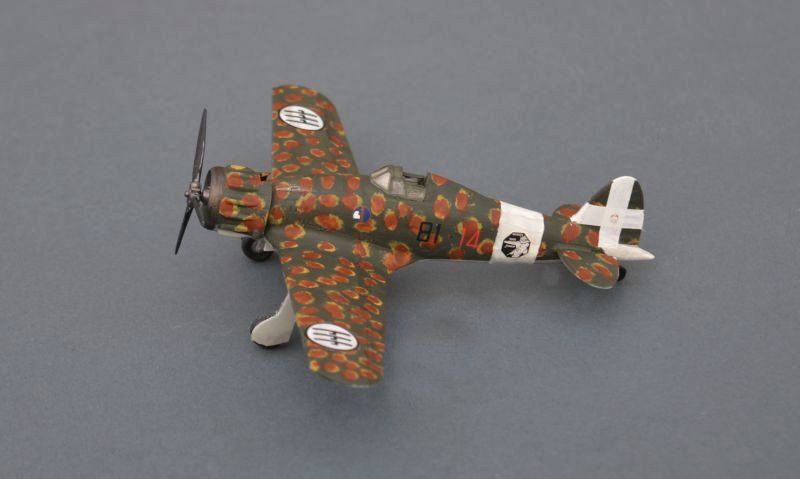Adversaries: WW2
Italian & Vichy French.
![]()
Most of these aircraft, but not all, have tangled in some way (mostly unsuccessfully) with the Fleet Air Arm:
 Main Index
Main Index

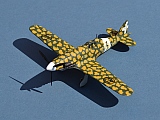
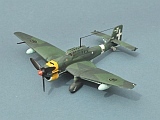
Click on the icon or scroll down to see the models
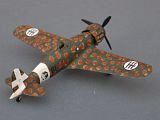
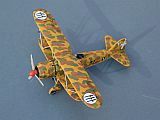
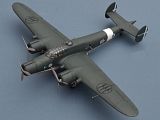
79 Sq, 9 Grp, 4 Stormo, Comiso, Sicily / Malta July 1940
Italeri
The CR.42 was the most numerous Italian military aircraft of WW2. Although obsolete at the start of the war, Itlaian Air Force doctrine emphaissed agility and manoeuvrability over speed and weight of armament. The CR.42 was very popular, with some units even returning their MC.200s and reverting to the earlier biplane.
The CR.42 saw some success as a fighter over Malta, until the RAF’s Hurricanes developed tactics to overcome the mismatch in agility. It also saw extensive service in North Africa, where it also served as a ground attack and close support aircraft, a role for which is was particularly well suited. CR.42s fought in the Greek and Albanian campaigns, as well as the Battle of Britain.
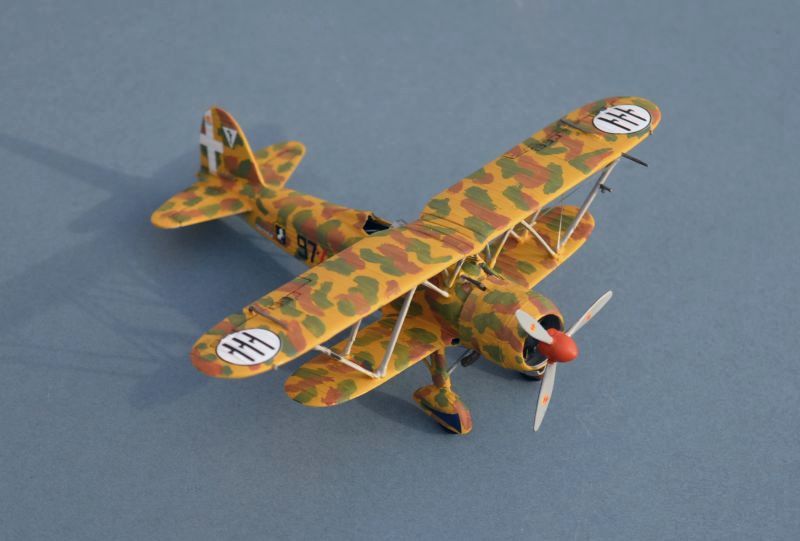
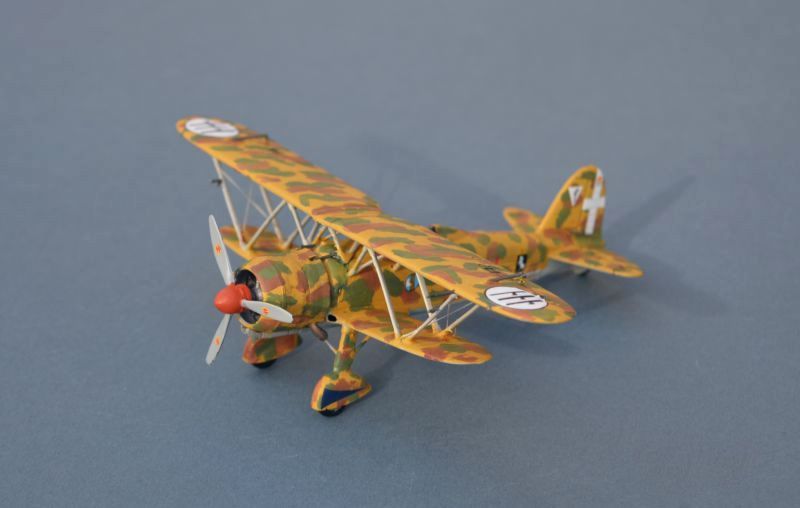
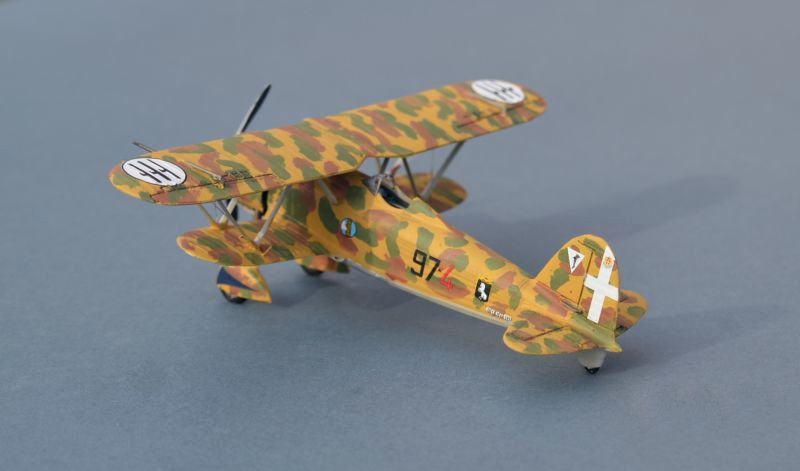
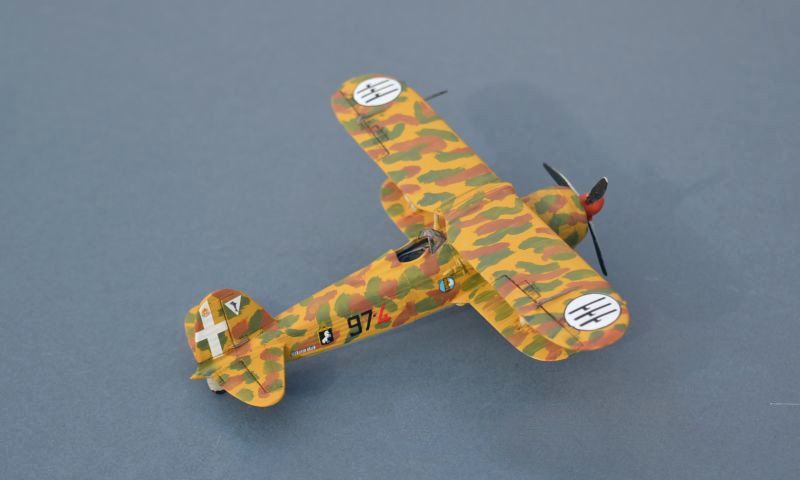
81 Sq, 5 Grp, 1 Stormo, Trapani-
Hobby Boss (with Xtradecal markings)
The Macchi MC.200 Saetta entered service with the Regia Aeronautica in August 1939. Designed by Mario Castoldi (hence the “MC”) , it was a modern and fast metal skinned monoplane that would see service throughout the war, but it received a lukewarm welcome from experienced Italian pilots who preferred the older biplane Fiat CR.42 for its agility. They also disliked the enclosed cockpit so much that later versions had an open or semi open cockpit reinstated.
Flying from Sicily, the MC.200s of 88, 79 and 81 Sq. saw the type’s first combat over Malta on 11 June 1940, acting as escorts to SM.79 bombers attacking the island’s dockyard and Hal Far airfield. Met by the tenacious and very agile Gloster Sea Gladiators of the Hal Far Fighter Flight, they did not fare well despite their far superior speeds, with the first MC.200 lost to a Sea Gladiator on 23 June 1940.
With the arrival of Hawker Hurricanes in July 1940, the Saetta was more evenly matched in speed and agility (although the Gladiators also continued to harry them and their bombers), but the less powerful armament of the Italian aircraft counted heavily against it. Nevertheless, the Saetta performed well against the Hurricane until their withdrawal from Sicily to join the Axis assault on the Soviet Union.
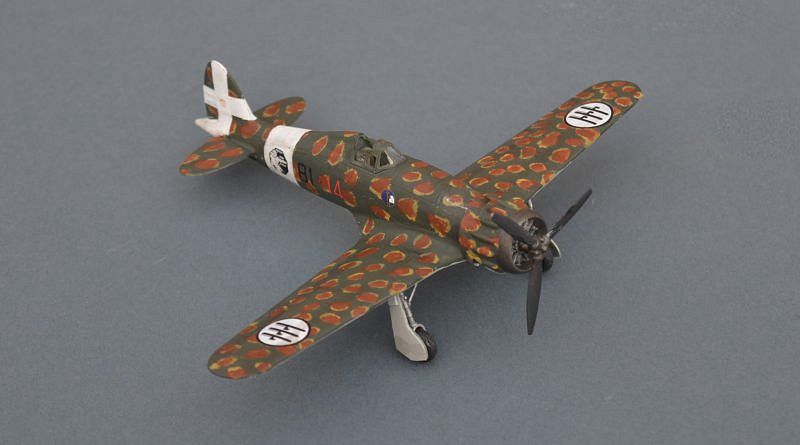
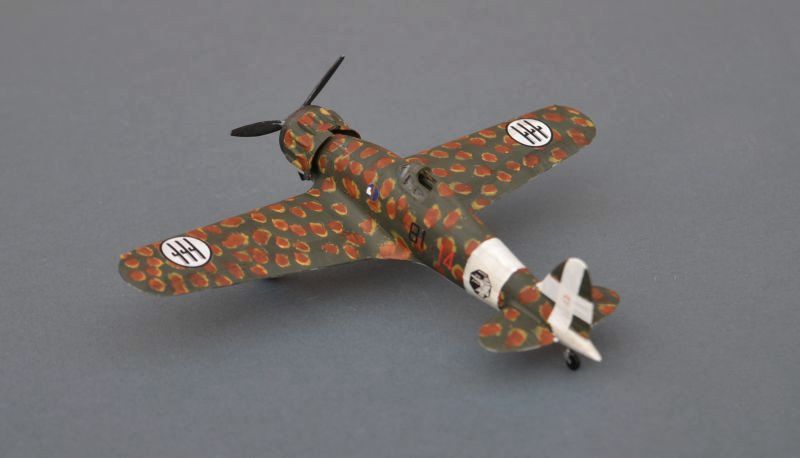
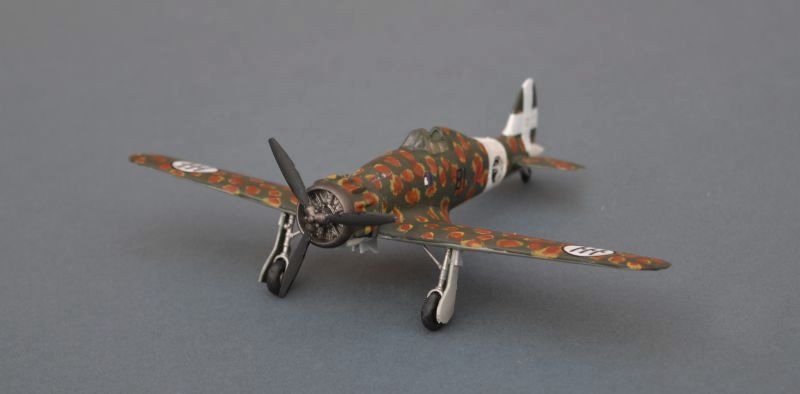
377a Sq, Palermo Bocadifalco, Sicily 1942
Supermodel
The Reggiane Re2000 Falco (Eagle) was only used in small quantities by the Italian Air Force. Despite excellent performance, high speed, long range and manoeuvrability, it was rejected by the Regia Aeronautica because of concerns about reliability and specifically, a dislike of the large structural wing fuel tanks which it was thought would be difficult to build, prone to leaks and vulnerable to enemy fire. Despite this rejection, Reggiane continued with the design as a private venture and exported it to Sweden (60) and Hungary (70, plus 204 of a locally produced derivative). Even the RAF contracted to buy up to 300 Re2000s, but the contract was cancelled when Italy entered the war on the Axis side. A naval variant served onboard 3 Italian battleships (and later ashore as naval Base defence) with catapult assisted launch then recovering ashore after a sortie.
A small number of Italian owned Re2000s (about 14 of various marks) were issued to 23 Gruppo, 3 Stormo, based at Comiso in Sicily, forming an experimental fighter section as part of 74 Squadriglia. After 23 Gruppo were redeployed to Libya, this squadron remained in Sicily, as the independent 377a Squadriglia, based at Palermo Boccadifalco as well as Trapani further to the west. The aircraft operated over and around Malta during 1941 and 1942, mostly escorting supply ships heading to North Africa where the aircraft's long range enabled it to reach almost as far as the Tunisian coast.
They also undertook regular raids against targets of opportunity in Malta, strafing and dropping light bomblets often at dawn. During one of these raids the Italian Re2000s gained their only recorded air to air kill, an RAF Blenheim.
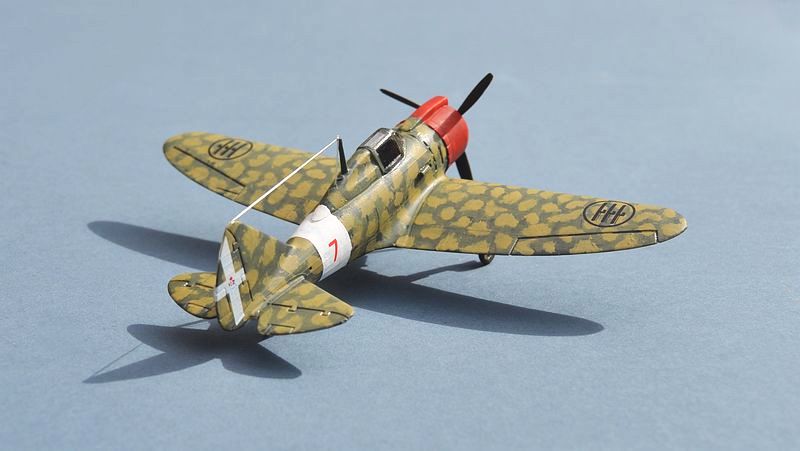
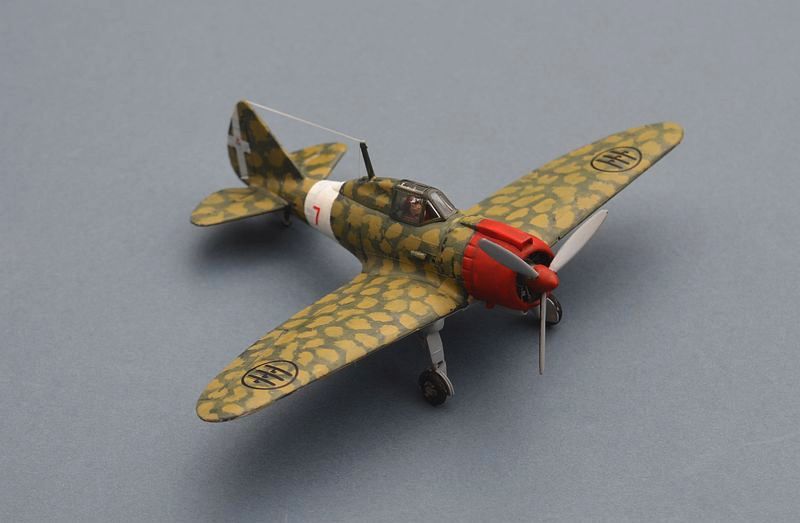
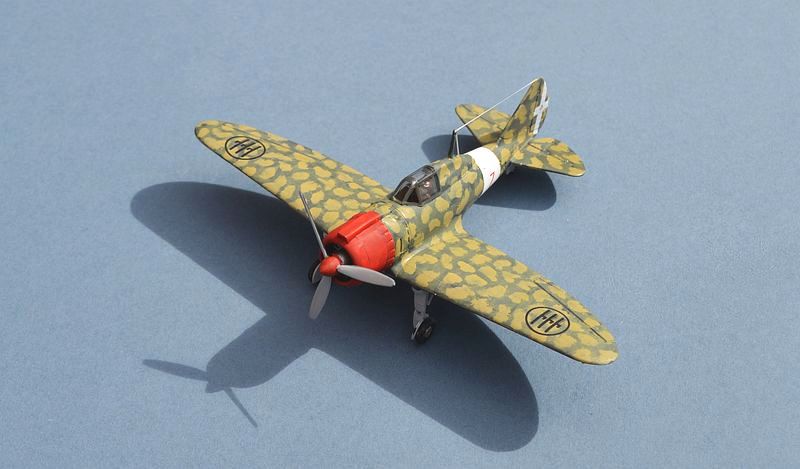
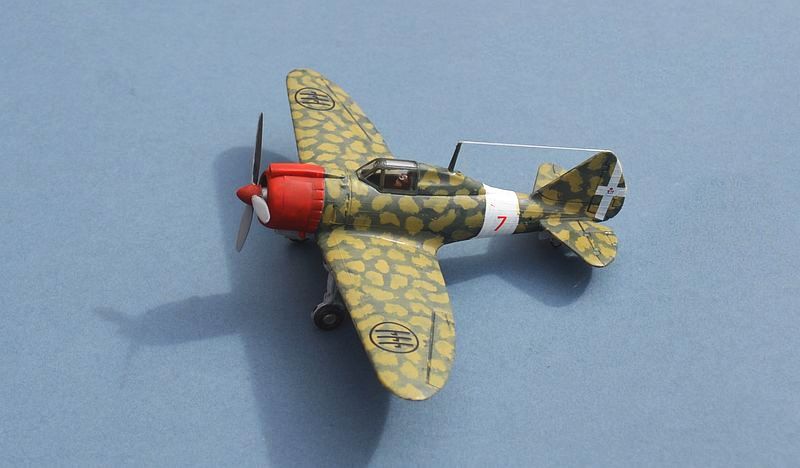
351a Squadron 155 Gruppo. 51 Stormo, Gela, Sicily August 1942
Frog / HEMA, 1/72.
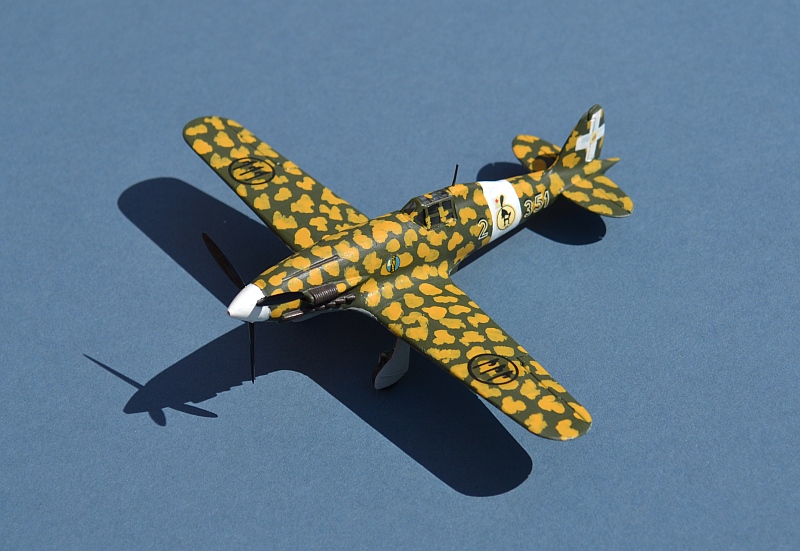
The elegant and rakish looking Folgore ("Thunderbolt") was developed from the earlier MC200 Saetta by fitting the superb German Daimler Benz DB601 engines (later built under licence by Alfa Romeo). Entering service with the Regia Aeronautica in July 1941, it quickly proved to be an excellent fighter, at least the equal of the Hurricane and as good in the air as the Bf109, but poorly armed with only 2 0.5 inch Breda machine guns.
I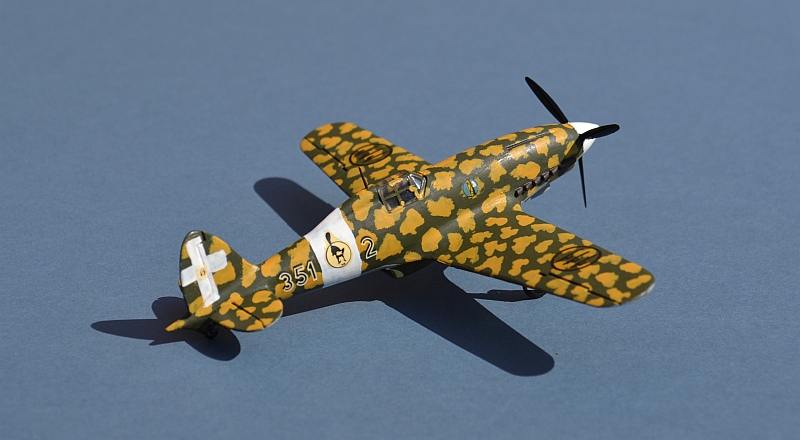
It played a significant role in North Africa and over the skies of Malta, as well as fighting on the Eastern Front against Russia. No less than 139 Folgori took part in Rommel's June 1942 attack on Tobruk and subsequent drive toward el Alamein.
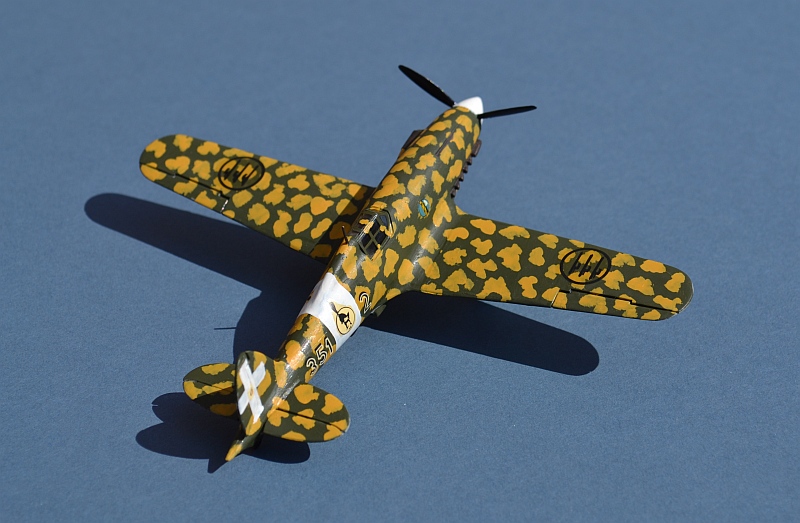
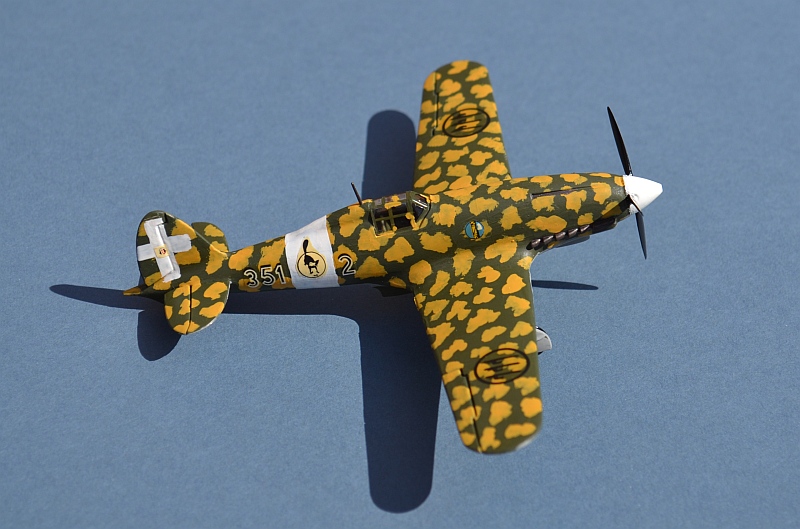
In August 1942, Squadrons of Folgori flying out of Sicily fought against the Pedestal ships, damaging several and clashing with the fleet fighters of the Fleet Air Arm and RAF Malta defenders. After the war, several refurbished aircraft remained in service with the Egyptian Air Force right up until until their replacement by MiG jets in 1951.
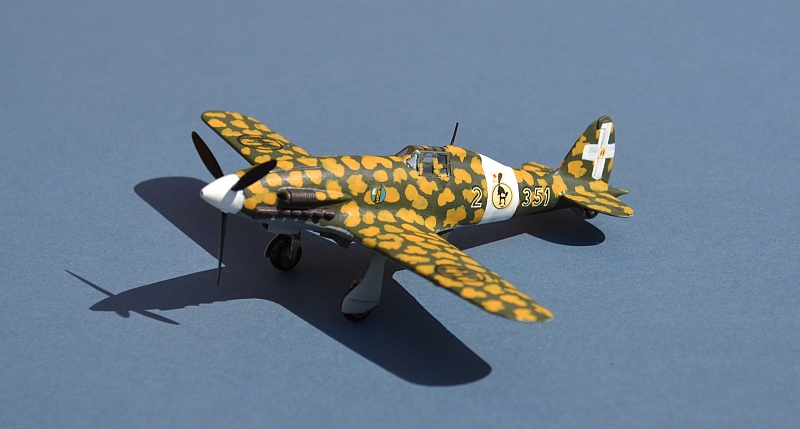
Savoia Marchetti SM79 Sparviero (Sparrowhawk)
281 Squadriglia, 132 Gruppo Autonomo A.S, Gerbini, Sicily May 1942.
Italeri. The old Airfix Sparviero was one of the first kits I built, back in the 1960s. I have had a soft spot for it ever since , and the recent Italeri tooling is superb.
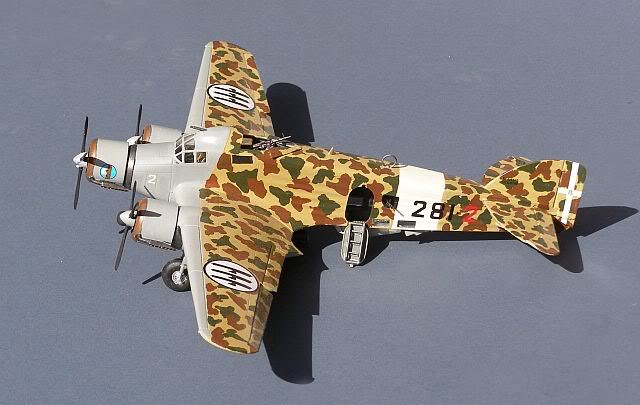
The distinctive SM79 Torpedo-
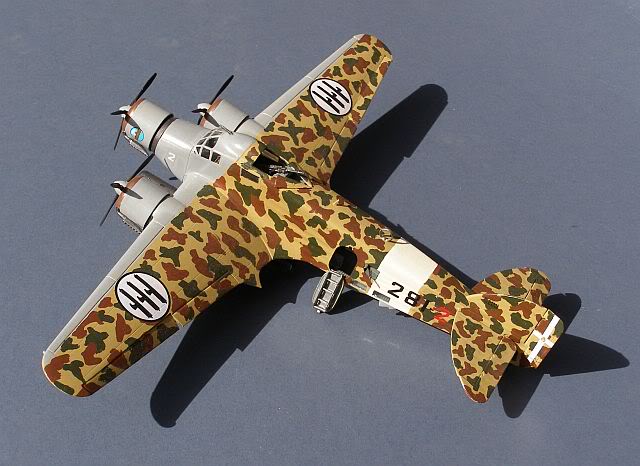
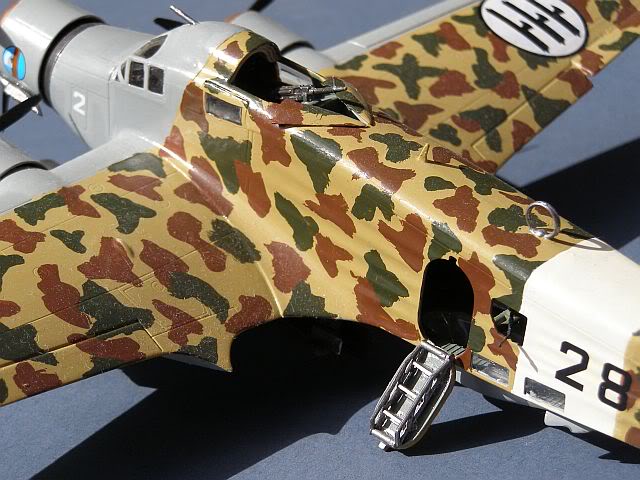
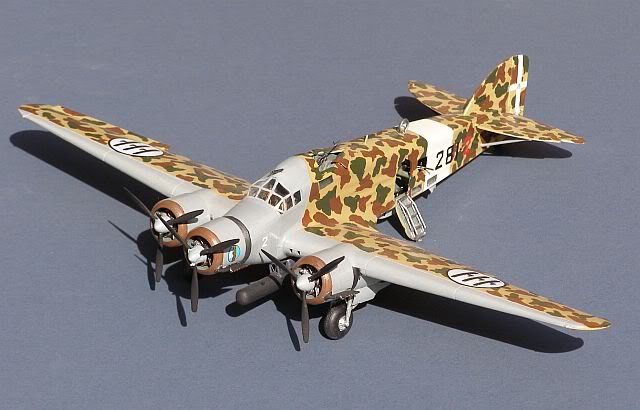
CANT Z.1007 Bis Alcione (Kingfisher)
60a Squadriglia, 33 Gruppo, Regia Aeronautica, Trapani-
Supermodel, 1/72
The CANT Z.1007 medium bomber was designed in the mid 1930s by Fillippo Zappata of
CANT (Cantieri Aeronautica e Navali Triestini) , based on the highly successful CANT
Z.506 floatplane. With a crew of five, its three 1,000hp rotary Piaggio P,XI RC.40
engines (derived from the French Gnome-
With a highly streamlined wooden construction, the Z.100bis was fast (285 mph)and carried a reasonable bomb load of 1,200 kg, with wing hard points for an additional 1,000Kg. Normal operating range was around 600 km and although it could carry two torpedoes in the bomb bay, it was never used in this role. The Z.1007 saw its first wartime action in August 1940 over Malta, when around 30 bombers attacked Luqa airfield. It also saw extensive service in Greece, Yugoslavia and North Africa, with limited participation in the Battle of Britain. Unlike other Italian aircraft , its use on the Russian Front was limited by the poor reaction of the wooden airframe to cold and damp conditions. The aircraft returned to Malta in 1941, operating alongside the aircraft of the Luftwaffe II Fliegerkorps.
Throughout 1942 two Stormi and four Gruppi of Alciones flew in the anti-
During Operation Pedestal (August 1942) 51° Gruppo flew reconnaissance missions from Sardinia against the Malta Convoys, with 3 aircraft bombing the convoy at high altitude on the 14th August.
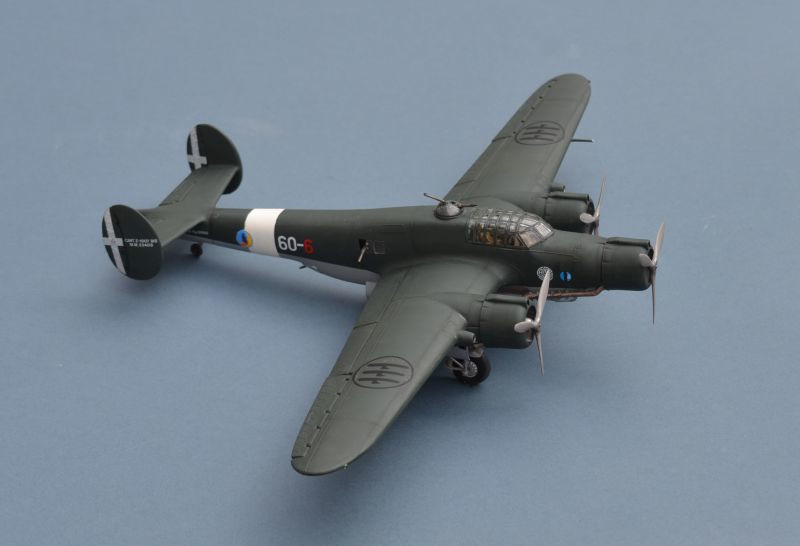
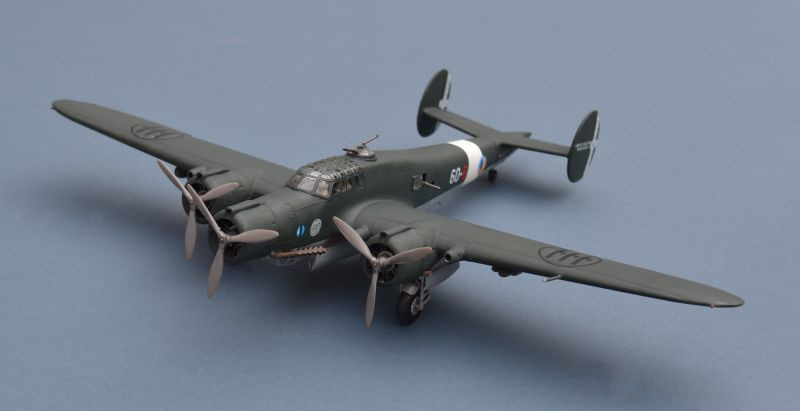
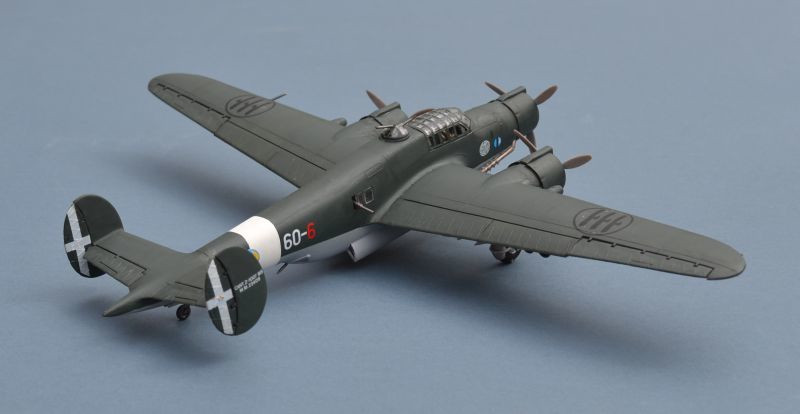
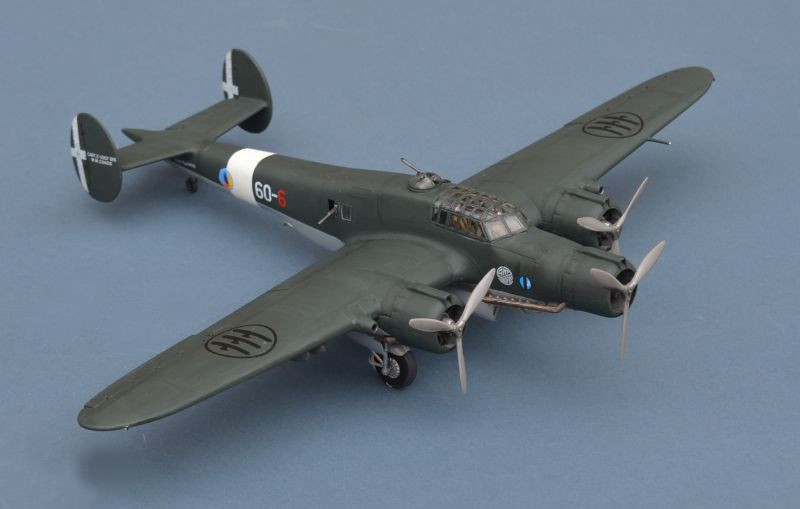
Junkers Ju-
239a Squadriglia, 97 Gruppo, Regia Aeronautica, Gela, Sicily, 1941.
Airfix, 1/72
The Ju-
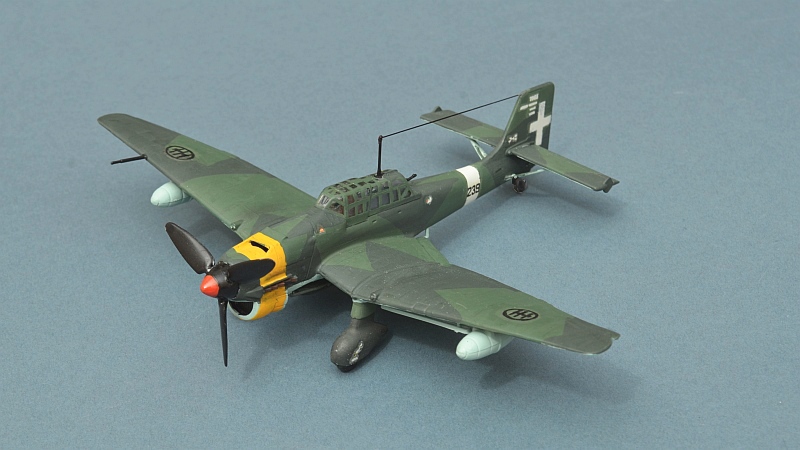
The Italian Regia Aeronautica obtained 100 ex-
The Ju-
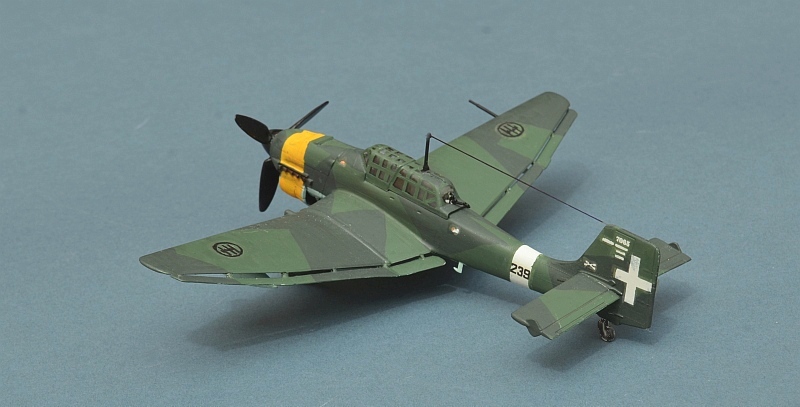
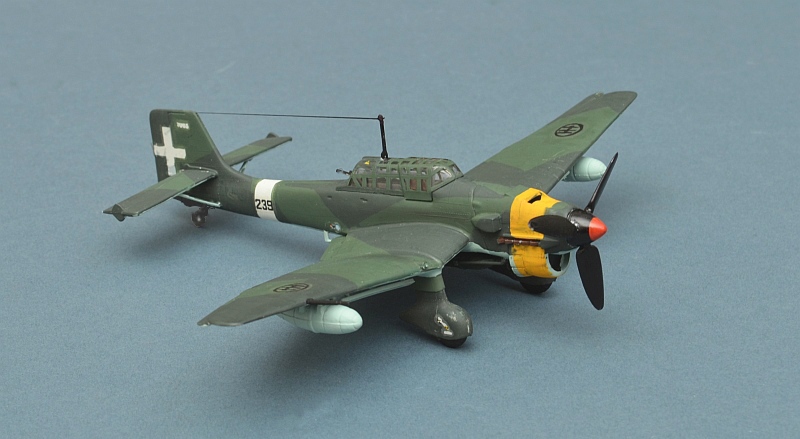
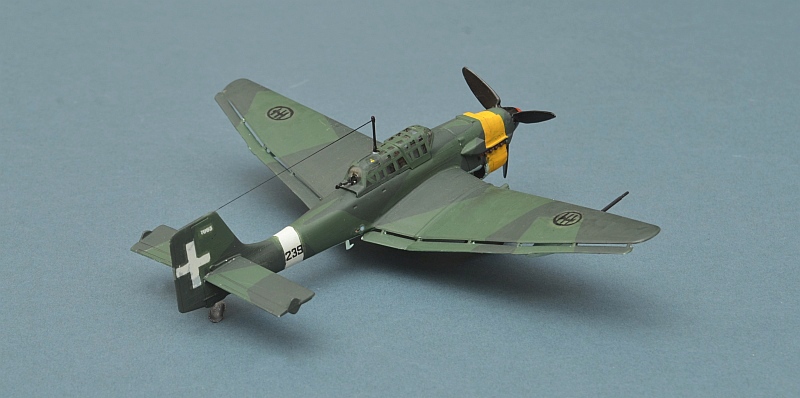
2 Gruppo 4 Aviazione Nazionale Repubblicana, Bresso, Milan, 1944.
Aliplast, 1/72
he FIAT G.55 Centauro entered Regia Aeronautica service in early 1943, with 20 Gr,
51 St initially defending Rome and then moving to Cagliari. Part of the trio of advanced
"Serie 5" fighters that included the Macch C.205 and Reggiane Re.2005, it was regarded
as one of the finest Italian aircraft of the war, with even the Germans rating it
higher than the Bf-
Powered by a licence-
By September 1943, the date of the armistice between Royalist Southern Italy and
the Allies, only 35 had been delivered, but production continued under the German
puppet Italian state, with at least 138 new aircraft used by the Aeronautica Nazionale
Repubblicana (ANR) and the Luftwaffe, replacing Macchi C.205s and eventually being
replaced themselves by Bf-
After WW2, Italy restarted production using stockpiled parts and airframes. As well
as the Italian Air Force, 30 were exported to Argentina, plus a number to Egypt.
A new model, the G.59 powered by a Rolls Royce Merlin engine, flew from 1948 including
as 2-
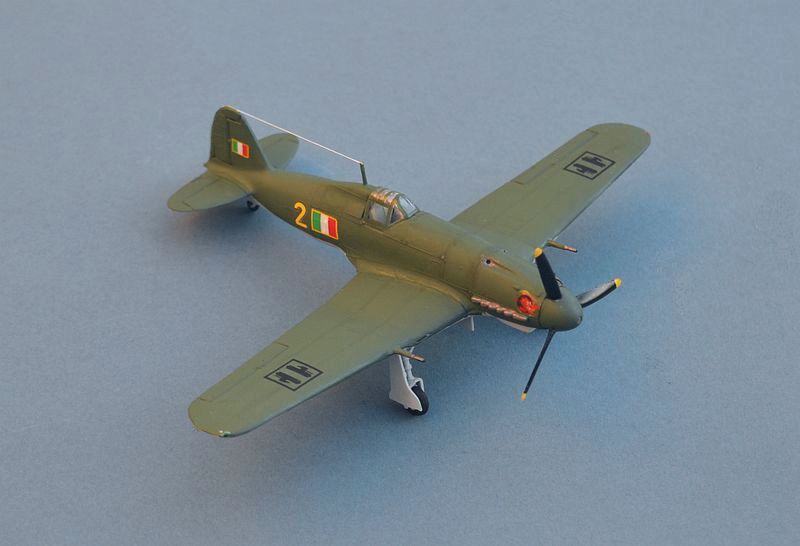
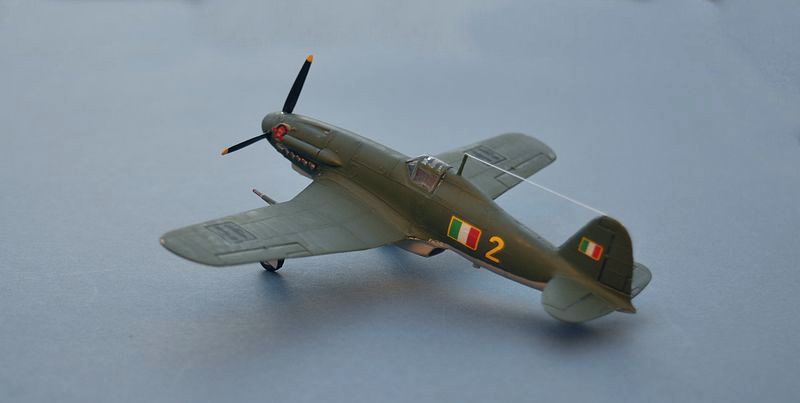
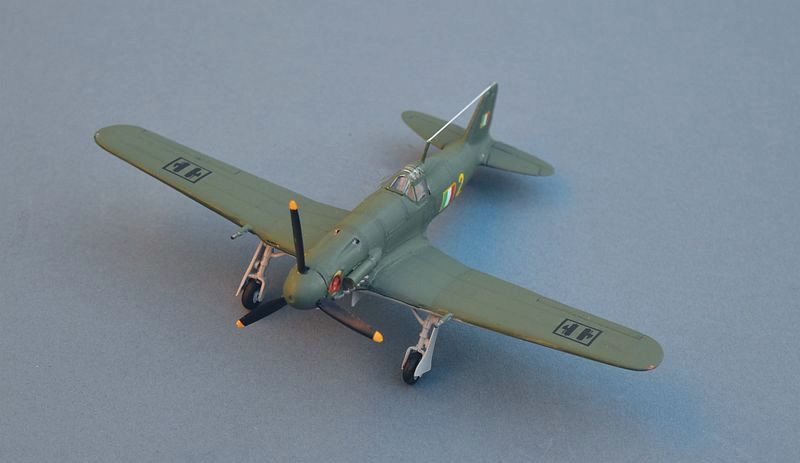
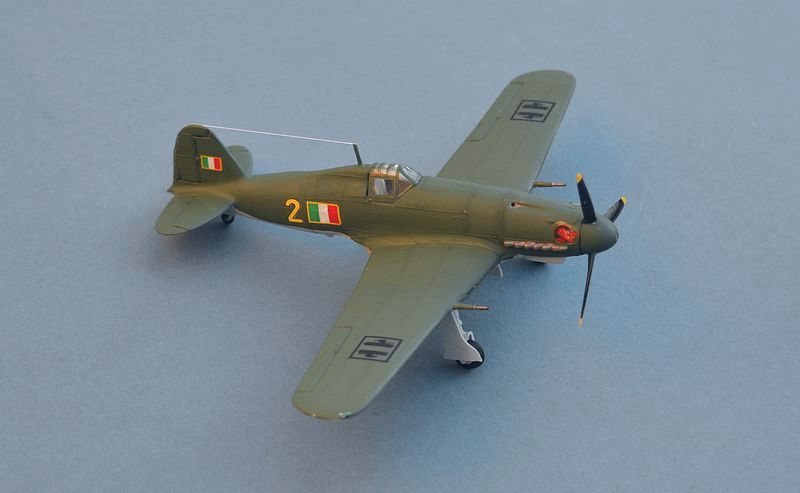
Vichy French Forces, Madagascar 1941,
Heller. not a pleasant kit to build as nothing fits.
The MS406 arrived too late to counter modern Nazi aircraft during the Battle of France. Nevertheless, it was a reasonable aircraft and Vichy forces continued to deploy it at home and throughout their colonies in North Africa, the Middle East and Madagascar. Nevertheless, by 1941, technology had moved on and it was no match for the Martlets and Sea Hurricanes in wide FAA Service. This particular aircraft fought unsuccessfully against the RN during Operation Ironclad, the Allied Occupation of Vichy Madagascar
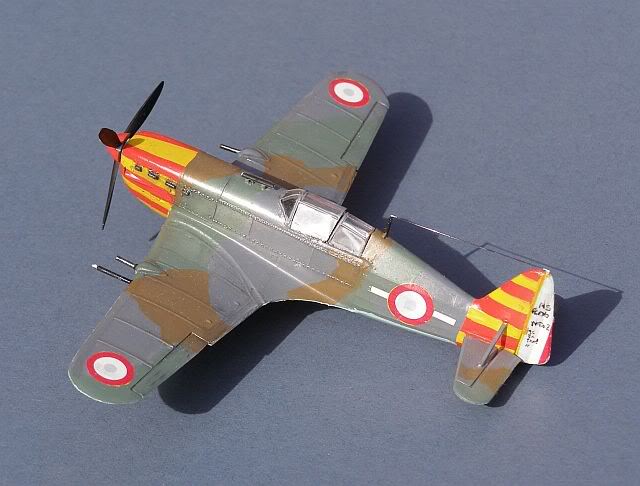
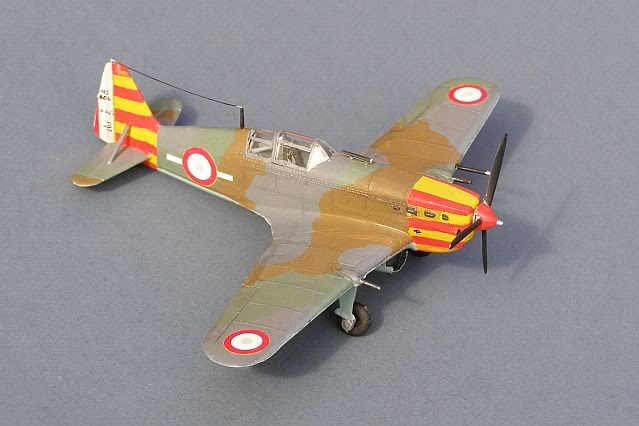
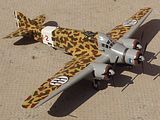
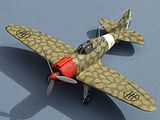
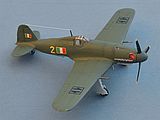
www.gengriz.co.uk
